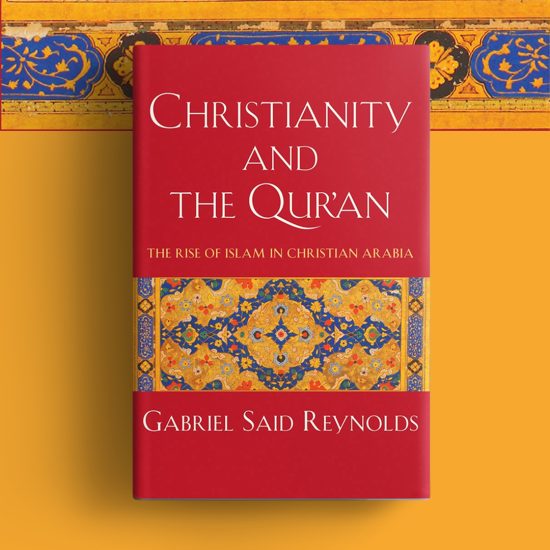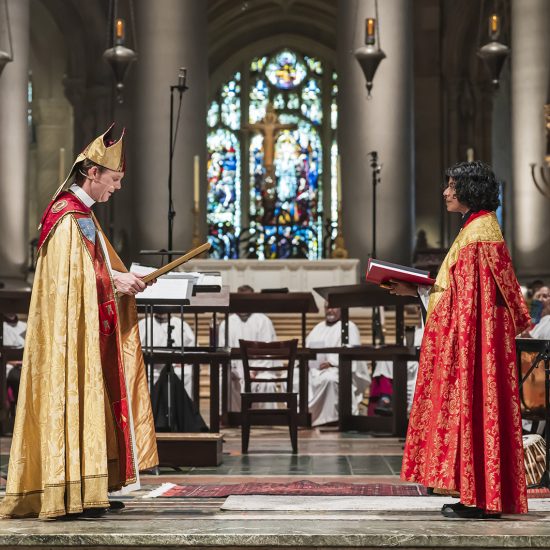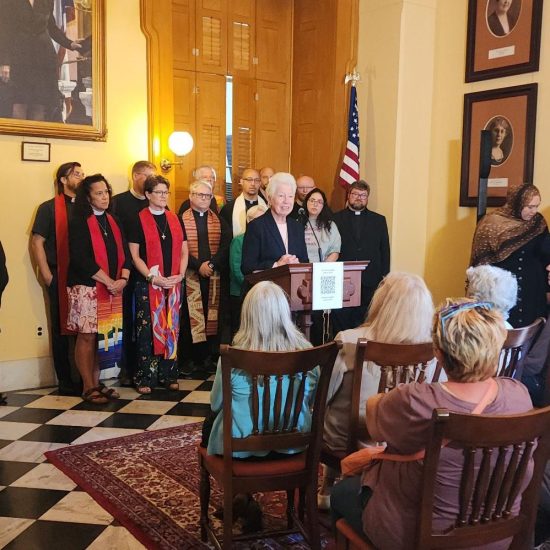

WITH THE BEST OF INTENTIONS: Interreligious Missteps and Mistakes. Edited by Lucinda Mosher, Elinor J. Pierce, and Or N. Rose. Maryknoll, NY: Orbis Books, 2023. Xvii + 220 pages.
When we enter religious spaces different from our own, knowing exactly how to behave is not always easy. We can make mistakes even within our own communities, so when we cross religious boundaries, life can be even more precarious. I know, I’ve been there. I may have said something inappropriate or perhaps reached out to shake hands when such a gesture is not appropriate. Of course, I’m not alone in having transgressed boundaries. That doesn’t make the mistakes any less problematic, but we can take solace in knowing that such mistakes are a common occurrence. Therefore, in the interest of mitigating the chances of making such mistakes, we would be well advised to be open about our lack of knowledge when we cross boundaries. It is better to ask questions ahead of time than make major mistakes. While mistakes will happen, it’s important that we remain willing to reach across religious boundaries, even as we always remain mindful of the cultural dynamics involved. Perhaps it would be helpful to hear stories of people who made mistakes as they sought to reach across religious boundaries with the best of intentions.

Robert D. Cornwall
As we ponder the possibilities of engaging in interreligious conversations, it is helpful to have resources that address “interreligious missteps and mistakes” such as this collection of essays titled With the Best of Intentions: Interreligious Missteps and Mistakes. This book contains a collection of essays that address the challenges we face as we engage in conversations and relationships with people and communities whose faith traditions are different from our own. The editors of the collection of essays present in this book are all committed practitioners of interreligious work. Lucinda Mosher directs the Master of Arts program in interreligious studies at Hartford International University for Religion and Peace. Elinor Pierce is the research director for the Pluralism Project at Harvard University, and Rabbi Or N. Rose is the founding director of the Betty Ann Greenbaum Miller Center for Interreligious Learning and Leadership at Hebrew Union College.
Writing in the preface to With the Best of Intentions, Francis Clooney, SJ, the Parkman Professor of Divinity at Harvard University, takes note in his preface that “it is good that interfaith relations have pressed to the point where smaller and more intimate successes and failures are taking place, and where a book like With the Best of Intentions can be quickly populated with the reflections of so many experienced practitioners of interfaith relations who have learned by their mistakes as well as their successes” (p. ix). In other words, while missteps are going to happen, there are enough boundary-crossing events taking place that we can learn from the mistakes of others even as we seek to minimize the possibilities of doing just that. So, as the editors write in the introduction “The complexity of religious difference and the challenges of bridging it provide ongoing opportunity for learning, growth, and real transformation. Reflecting on our missteps is crucial for this sometimes sacred and often complicated work” (p. xiv).
With this in mind, the editors have gathered thirty-four essays from practitioners ranging across the religious spectrum from Christian to Hindu. Even within the larger religious categories, there are differences to be made aware of. This is especially true with Hinduism, but it is true of most since religious communities are not homogeneous. With that in mind, the editors divide the essays into five parts, dealing with different aspects of interreligious relationships.
Part 1 is titled “First Impressions” and it includes seven essays. The first essay, titled “Sweating the Small Stuff: When Minor Missteps Have Major Impact,” is a good place to start. In this essay, Lexi Gewertz and Kathryn Lohre note that missteps can create opportunities to cultivate spaces of grace, where learning takes place. Thus, they write: “When our interreligious partners show us kindness and grace in those mortifying moments, it can transform shame into humility” (p. 11). There is an essay on names, with a focus on acknowledging the individual before us by offering our names and inviting the other to do the same. Another essay deals with failures in interreligious leadership. Aida Mansoor offers an important essay titled “Always Ask,” which deals with the kinds of boundaries religions set, such as hand-to-hand contact or offering the appropriate food. As we read these essays, we learn the importance of asking questions and being prepared. Even when we know better, we may fall short.
Part 2 is titled “Presumptions,” Here essays deal with a variety of presumptions that we bring to the table. Essays include discussions of the nature of prayer and whether it should be included in an interreligious event. The way interreligious leadership is taught, such as the possibility that some things might be off-limits, including certain spaces, such that they might be made hospitable. Or a discussion of religious and racial equity by a white Buddhist, such that one might be a religious minority and still have cultural/social privilege. In a chapter on “avoiding assumptions in faith-based coalitions,” Rachel Mikva writes about a rally for the Religious Coalition for Reproductive Choice,” where a person attended, supporting choice, but was offended by a song titled “An Acorn Is Not a Tree,” since he didn’t distinguish between a fetus and a human, which was the message of the song. This serves as a reminder that making bigger tents is not always easy. One essay, written by a Muslim, addresses conversations that included Christians who refrained from talking about Jesus, he spoke of the importance of authenticity. Thus, Hussein Rashid writes: “Attempts to be overly cautious for fear of offense, without consultation with our partners, keeps us in the same place. We do not get to know one another, discover one another, and engage with difference” (p. 67).
Part 3 is titled “Conversations.” Here the essayists explore difficult one-on-one conversations they have experienced, and what they have learned. The essayists reflect on how things might have gone differently and what they learned from their experiences. Among the essays I’ll take note of Jeffery Long’s essay: “When the Head Gets in the Way of the Heart: An Interreligious Conversation that Went Wrong.” This essay deals with a professor’s email conversations with a former student that went very wrong when the former student challenged the professor’s faith (Hinduism), making false claims, and more. He eventually followed guidance from campus security and cut off the conversation. The question is when and where to have such conversations, and how to conduct them. The key thing he learned is to lean into the heart over the head.
When we turn to Part 4 we encounter essayists dealing with the question of “Competing Values.” It’s important to remember that different religious traditions view the world and their place in it differently. Sometimes the values they hold dear compete with those of others. One of the essays, for example, deals with the Israel/Palestine issue, and this was before the current Israel-Gaza conflict. These can be difficult and sticky points of departure. There is a story about the creation of a Confucian Association at Boston University, which raised the question of whether Confucianism is a religion and its connection to China. There is an essay about when “coexistence wasn’t good enough,” that is when things remain on the surface, such that traditions were treated as if they are monolithic.
Finally, there is a series of eight essays in Part 5 dealing with “Power Dynamics.” Here the focus is on experiences with structural oppression, including racism, sexism, and colonialism to name a few. These essays remind us that mixed into our conversations are often certain unexamined habits and expectations that must be dealt with if there is to be a true relationship.
While these essays are not exhaustive in scope, they provide the reader with helpful case studies for interreligious leaders to draw from. Not every essay hits the same way, but all are useful. While we are apt to make mistakes and missteps when we enter into interreligious spaces, the good news is that if we’re willing to enter those spaces, learning and even forgiveness can take place. So, while you may (likely will) make mistakes and missteps in your attempts to engage in interreligious life, crossing religious boundaries is important. We can try to coexist, but surely there is more to living in a pluralistic setting than tolerating each other. While mistakes will be made, we can learn from them. The message then is, that if you cross interreligious boundaries, you may make mistakes, but it’s possible to learn from mistakes. Not only will we learn from our mistakes, but we are also likely to experience blessings as well.
With the Best of Intentions came concurrently with another book from Orbis Books dealing with religious pluralism and interreligious relationships. That book, Pluralism in Practice, contains case studies of living in a religiously pluralist context. That book, authored by Elinor Pierce, one of the editors of this book, would make a great pairing for groups and educational institutions studying religious leadership. Such conversations and work are important, especially as parts of North America (and European) are struggling to make sense of the growing religious diversity. So, we’re seeing a backlash against immigrant communities whose faith traditions are different from the traditional majorities. Having resources like these two books can help us move beyond religious illiteracy to true understanding.
This review originally appeared on BobCornwall.com.
Robert D. Cornwall is an ordained minister in the Christian Church (Disciples of Christ). Now retired from his ministry at Central Woodward Christian Church (Disciples of Christ) of Troy, Michigan, he serves as Minister-at-Large in Troy. He holds a Ph.D. in Historical Theology from Fuller Theological Seminary and is the author of numerous books including his latest “Second Thoughts about the Second Coming: Understanding the End Times, Our Future, and Christian Hope” coauthored with Ronald J. Allen. His blog Ponderings on a Faith Journey can be found at www.bobcornwall.com.






